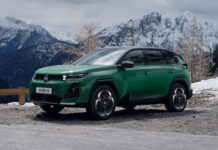The shift to electric vehicles (EVs) represents a fundamental change in how we think about transportation, similar to the evolution from wood-burning stoves to induction cooktops or from the telegraph to the smartphone. While both sets of technologies achieve the same goals—cooking and communication—the way they do so has profoundly altered our approach. Yet, a surprising trend is emerging in the EV market: the more you pay for an electric car, the less range you often get.
The Paradox of Premium EVs
This phenomenon is evident in the 2026 Nissan Leaf. The base model starts at $31,485 and offers 303 miles of range, while upgraded trims, despite costing more—the mid-grade trim is $35,725 for 288 miles and the top Platinum+ trim reaches $40,486 for 303 miles—offer diminished range. This isn’t unique to Nissan; Tesla Model 3, Ford Mustang Mach-E, and Hyundai Ioniq 5 models also follow this pattern.
The appeal of modern car features—heated seats, leather interiors, large screens, advanced connectivity—coupled with a desire for stylish, larger wheels, are contributing to this trend. These additions increase the price while simultaneously reducing range due to increased weight and energy consumption.
The Escalation Loop
Automakers face a challenge where increasing power and adding bigger batteries creates a self-perpetuating cycle. More power demands a larger battery, which adds weight, subsequently requiring more power, ultimately inflating the price without delivering a proportional performance gain.
Instead of chasing higher performance metrics, manufacturers should consider a shift towards reduction. A focus on lighter batteries, reduced weight, and eliminating unnecessary features could lead to cheaper, more enjoyable electric vehicles.
A Return to Simplicity and Fun
The current landscape is marked by a decline in affordable, sporty cars. Even practical performance options like the Volkswagen Golf GTI now start at $35,000 – a price out of reach for many younger enthusiasts. The Nissan Leaf, despite its softer suspension and somewhat dull steering, offers an engaging driving experience, especially at lower speeds. It demonstrates that a simple, fun-to-drive EV is possible.
Addressing Range Anxiety and Redefining Practicality
While range anxiety and the state of America’s charging infrastructure are legitimate concerns, the average person drives less than 50 miles per day. A shift towards smaller, more affordable EVs with reduced range could be a viable solution to the rising cost of transportation. A smaller battery would also offer faster charging times.
EVs will likely never replicate the visceral thrill of a Porsche flat-six or the iconic sound of a Ferrari V-12. However, as affordable sports cars disappear, there’s a growing demand for cheap and fun EVs. The industry should focus on delivering this option rather than relentlessly pursuing premium features that compromise range and affordability.
Ultimately, reimagining the role of range in EVs—moving away from the pursuit of maximum distance and towards practicality and enjoyment—could unlock a new wave of accessible and engaging electric vehicles.


































